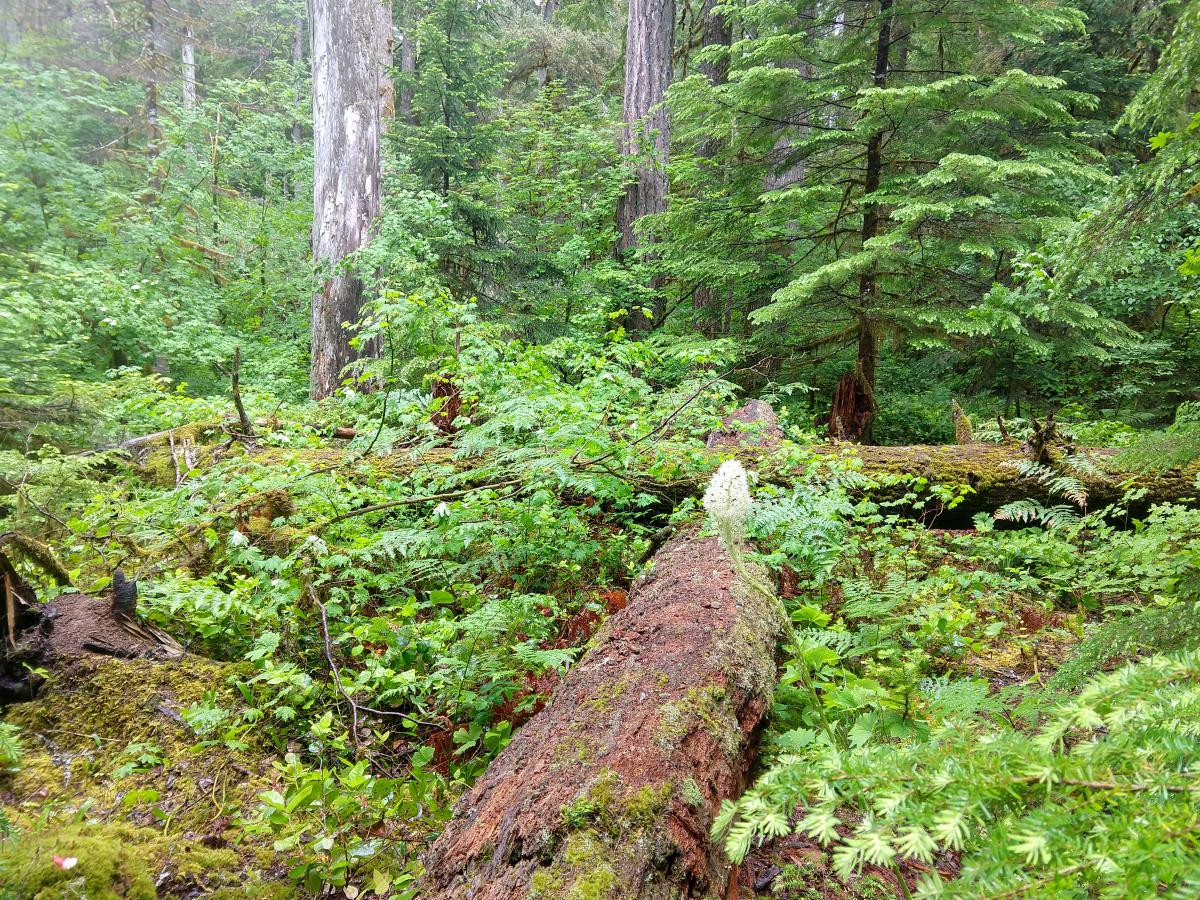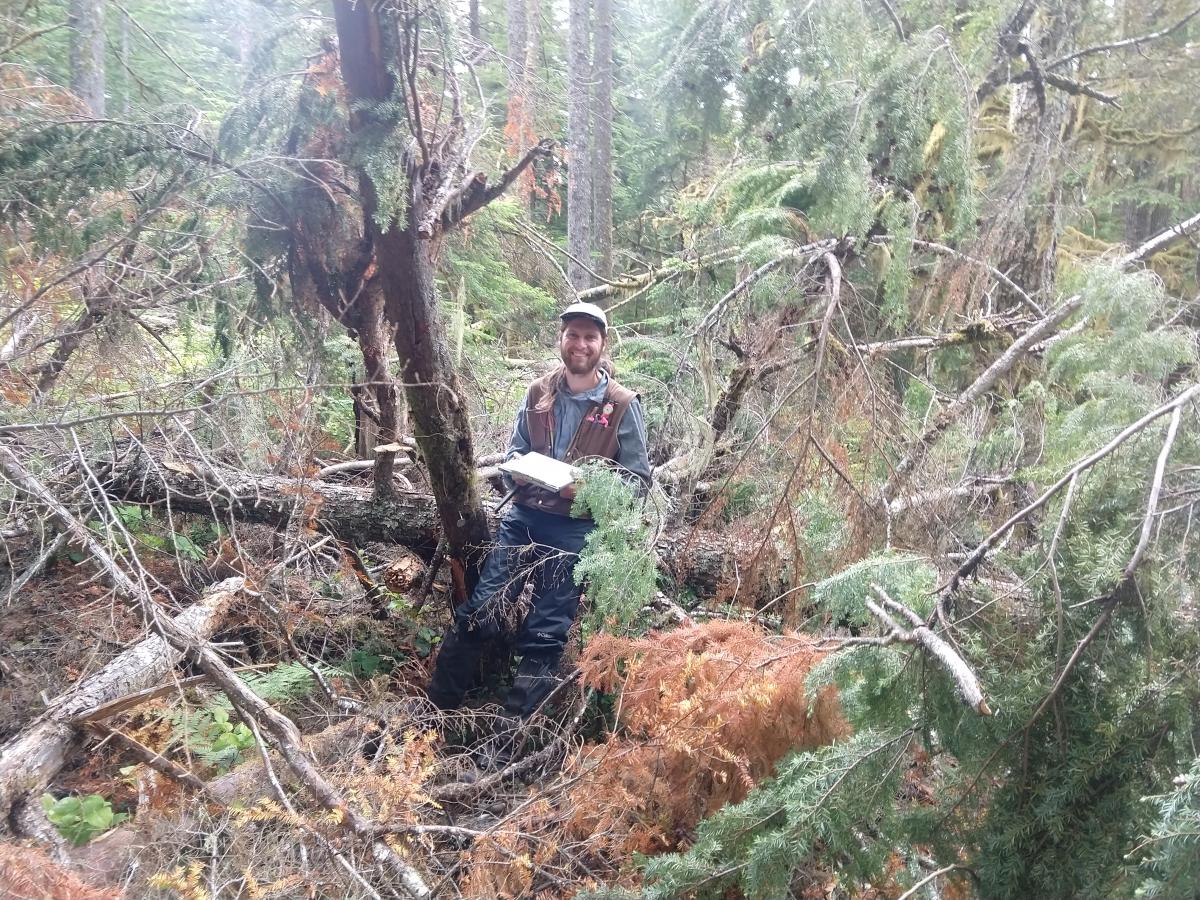Field crews are currently conducting censuses at several ForestGEO sites. Last week we profiled Donglingshan, Tyson Research Center, and Wytham Woods. Today offer one more: Wind River.
Wind River: USA | 27.2-ha | 3 Censuses*: 2010/11, 2016, 2021 | PI = Jim Lutz
*In addition to the full censuses that take place every five years, the Wind River field crew collects data on mortality, recruitment, and deadwood creation on an annual basis.
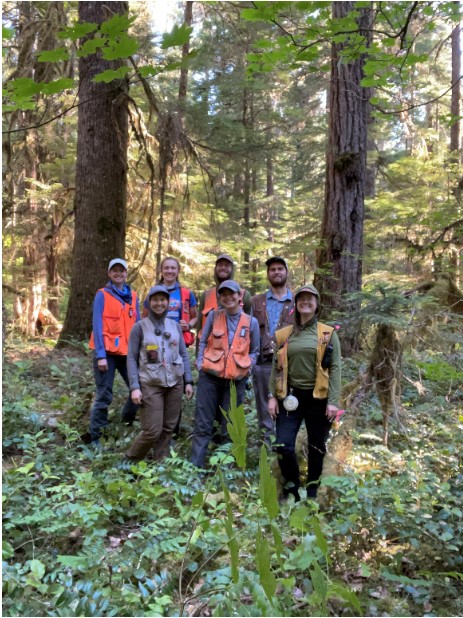
Bottom row, left to right, Sara Germain, Bella Wetzler, and Caroline Kittle (crew lead). Photo: Caroline Kittle.
Can you describe the work that you do and its significance in 30 words or less?
“Demystifying old growth forest dynamics to ensure their longevity.”
- Caroline Kittle (Wind River crew lead)
How does it feel to be back in the field as parts of the world are emerging from stay-at-home orders and others are still under strict public health mandates?
“Working in the forest has always felt like returning to 'real life' to me: away from the chaos of millions of people striving to coexist in the city, I'm able to engage more deeply with the world around me. Being here on the tailwind of the pandemic brings an especially poignant sense of reprieve and gratitude. Old trees like the ones we work with have persisted quietly through this pandemic, just as they have endured through two world wars; through the renaissance and countless revolutions; through the births and deaths of millions of people. Having the trees' perspective has been a peaceful counterbalance to my own experience of confusion, frustration, sadness, and sympathy for my fellow humans during this time. I feel it has helped me to be more compassionate and patient with people as we all emerge into this new normal. I feel immensely privileged to be in these trees' presence, and I hope others are also able to find solace where they can during these strange times.”
- Sara Germain (Wind River crew member)
What species do you encounter most while censusing your plot?
“I encounter western hemlock (Tsuga heterophylla) and Douglas-fir (Pseudotsuga menziesii) the most. Considering shrubs and other vegetation, probably salal (Gaultheria shallon), vanilla leaf (Achlys triphylla), and Oregon beaked moss (Kindbergia oregana).”
- Bella Wetzler (Wind River crew lead)
If you’ve worked on previous censuses at the plot, in what ways has the forest changed since then?
“This year, we have lots of new down woody debris. Upon my third year in the plot, I am also just noticing the tremendous nonvascular plant diversity here. Awesome!”
- Soren Struckman (Wind River crew member)
“Most of the streams in the forest are dried out whereas last year I remember wading, jumping, and climbing through many.”
- Jake Burgoyne (Wind River crew member)
What do you pack for lunch most days? Why does it work well for the field?
“If I can't get my hands on dinner leftovers, I like to pack exactly 1.5 peanut butter and jelly sandwiches. It's a classic that's never failed me, no matter the field position. With our ten hours days, the extra half is essential as a mid-afternoon boost!”
- Caroline Kittle
Censusing large plots requires lots of repetition. What do you do to keep yourself focused on the task at hand?
“I employ a lot of accents to keep myself sane, but the extra half sandwich is the real key.”
- Caroline Kittle
"To me, each tree is an individual that I often recognize from prior years: ‘Ah yes, the lollypop pine! You're pitching more than last year.’ With this understanding, the repetition of measuring diameter after diameter transitions into a series of novel interactions with old friends.”
- Sara Germain
“I take measurements that help us better understand the forest. It’s tough to explain how captivating that is for me. It’s a more than work, it’s a passion. I also motivate myself with snacks (chips).”
- Jake Burgoyne
“Sure, it involves a lot of repetition, but every woody stem is a unique little puzzle. In the field it's quite fun to collect all the data and practice being as observant as possible of the trees' condition and the forest in general. I think to keep myself focused throughout the day I try take the time to be explicitly grateful for fun things I notice around me whether that's a log wider than I am tall or a handsome little inchworm. Tasty snacks (i.e., jolly ranchers or hi chews) are a morale booster as well.”
- Bella Wetzler
What tool do you find most helpful in doing your work?
“Solid field clothes: boots, pants, shirt, and hat. Absolutely the most helpful. If those are subpar, then every other job becomes harder or impossible.”
- Soren Struckman
“While there are many tools that are necessary, perhaps the most helpful tool is a hatchet. Many of the old growth trees in this forest die from bark beetles and pathogenic fungi, both of which require peeling back thick layers of bark to discover.”
- Jake Burgoyne
“Being directionally challenged, I would have to say that the tool I find most helpful is my compass.”
- Bella Wetzler
What’s one thing you’ve learned over the course of your work on this census (forest-related or not)?
“Always look up!”
- Caroline Kittle
“I have (re)learned the value of good documentation, both for data quality and interpersonal conflict management.”
- Soren Struckman
“We had an exciting mortality this year that involved weevils! I had no idea that weevils could kill a tree, nor that they leave bark beetle-like galleries behind in the wood that they excavate. We took macro photos of the culprit and will be identifying it to species back at the lab.”
- Sara Germain
“This year I paid special attention to the mosses in our forests, especially at the WFDP. I've learned a lot about moss identification and their ecological roles in old growth, for example the different ways they may help tree seedlings establish on logs or the forest floor.”
- Bella Wetzler

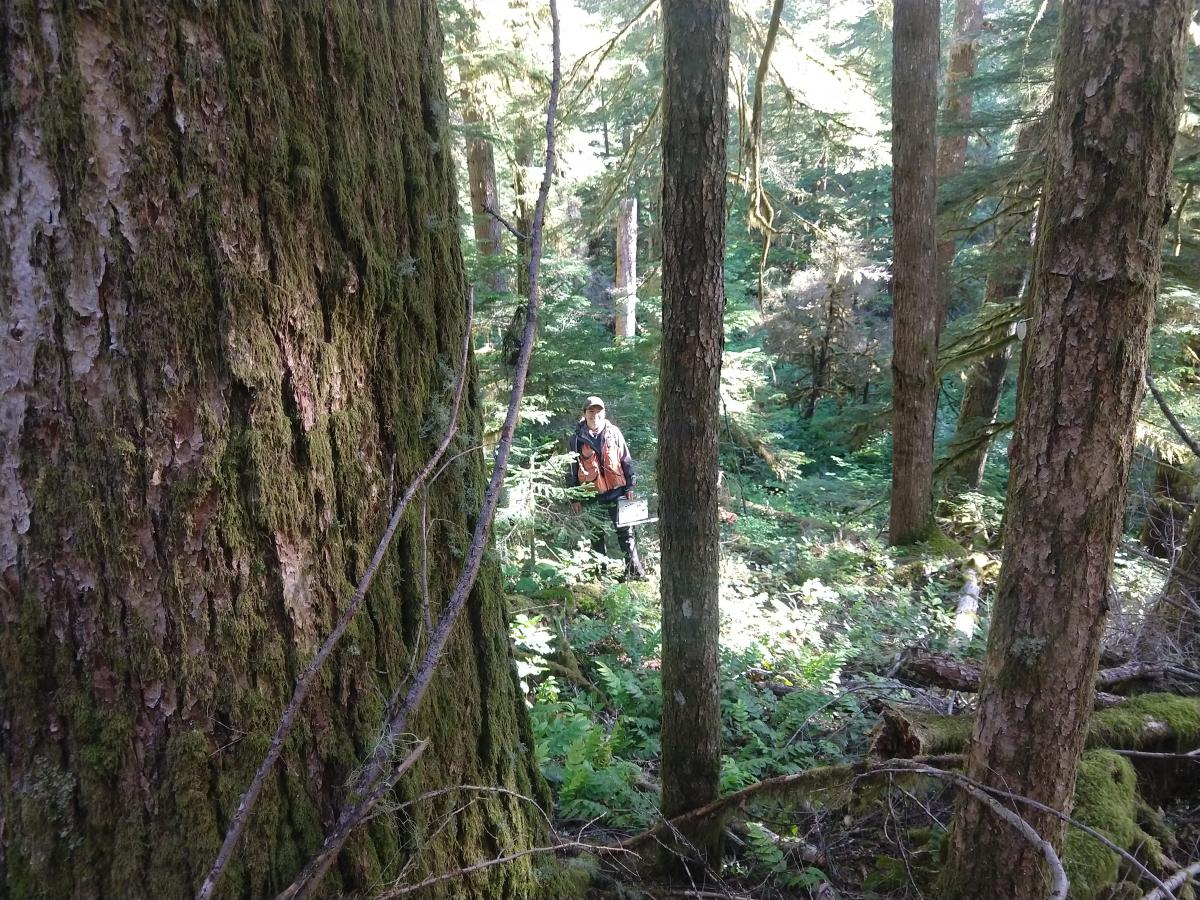
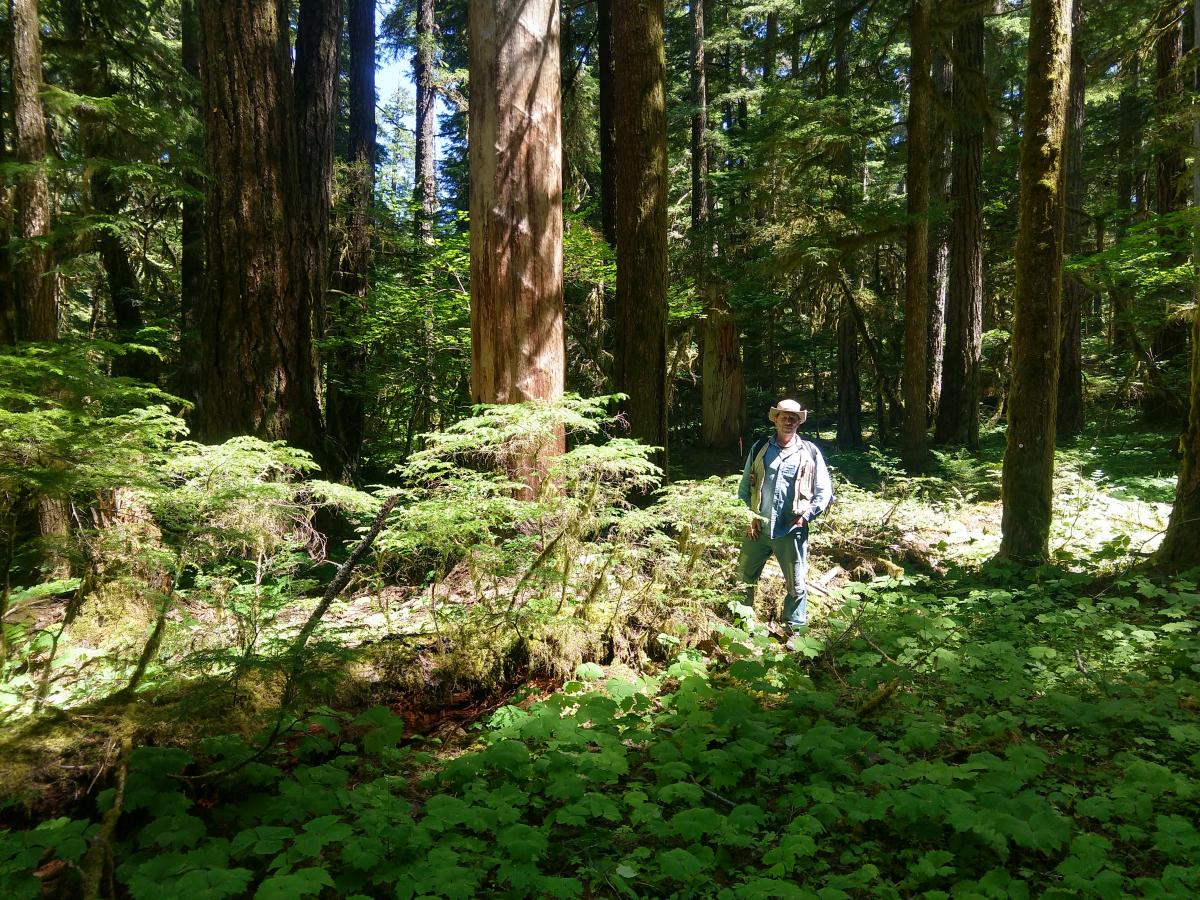
A tag is visible to the right of the photo – just that and 40,000 more trees to measure. Photo: Mark Swanson.
